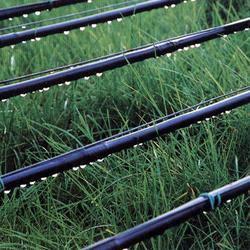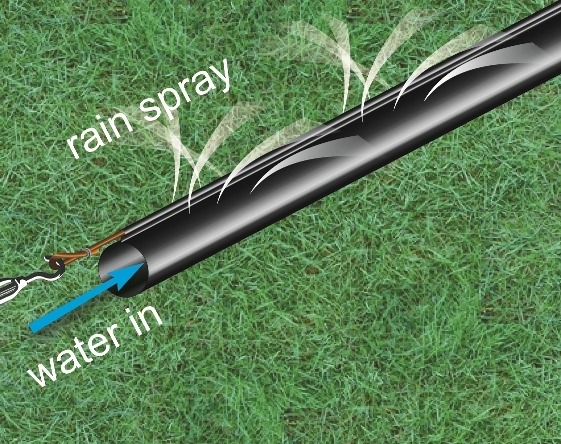The superior performance of sprinkler irrigation and drip irrigation equipment has played an increasingly important role in farmland irrigation. As a professional manufacturer of sprinkler irrigation and drip irrigation equipment, I will introduce the precautions when installing and using sprinkler irrigation equipment.

How deep should the pipeline be buried below the ground?
The principle of irrigating areas in the southern plains does not affect agricultural machinery or artificial farming. It should be at least 40 cm below the ground and conservatively at 50-60 cm. In some places in the mountainous areas, the soil layer is very thin and can only be determined according to actual conditions. The installation of sprinkler irrigation in Zhushan has such a situation: if the pipeline is buried underground, the bamboo roots and bamboo shoots will be dug out during the ditching process, and farmers are reluctant to do so. It is easy to dig the pipe, so simply lay plastic or iron pipes on the slope surface. In the northern irrigation area, the pipe must be buried below the freezing line, and the buried depth must be more than 1 meter.

Can the pipeline be used directly after installation?
No! After the pipeline is installed and the soil is positioned, the hydraulic test must be performed first. The test pressure of the high-density polyethylene plastic pipe should not be less than 1.7 times the design working pressure of the pipeline. If the pipeline design pressure is 0.6 MPa (6 kg), the test pressure Should be above 1MPa (10kg), the range of the pressure test gauge should be 1.3-1.5 times the test pressure, that is, 1.6MPa (16kg) is suitable. During the test, the pressure rise should be slow. The test pressure is maintained for 10 minutes, and the pressure drop of the pipeline is not greater than 0.05 MPa (0.5 kg, that is, 5 meters). The pipeline is qualified if there is no leakage or rupture. Backfill soil after passing the pressure test. Backfill must be performed on both sides of the pipeline at the same time. There must be no stones larger than 2.5cm in diameter around the backfill. Before installing the sprinkler or drip irrigation pipe (belt), the pipeline must be flushed with water to flush out mud and debris falling into the pipeline to avoid blockage.
How are PE pipes connected?

Polyethylene (PE) pipes adopt hot-melt butt connection or hot-melt socket connection, and shall not use thread connection or bonding. The two connection types should use special connection tools, and shall not be heated by open flames. (1) The hot-melt butt joint shall meet the following requirements. Clamp the joint ends of pipes and fittings on the butt welder, and wipe the joint with a clean cotton cloth. Plan the connecting end surface on the milling cutter so that the gap is not greater than 0.3mm. Correct the corresponding parts to be on the same axis, and the wrong side should not be greater than 10% of the wall thickness. Place the heating tool between the two connecting end faces so that the two parts to be abutted against the heating tool until the entire periphery is evenly flanged. Quickly pull out the heating tool and use uniform external force to make it fully contact to form a uniform flange.
